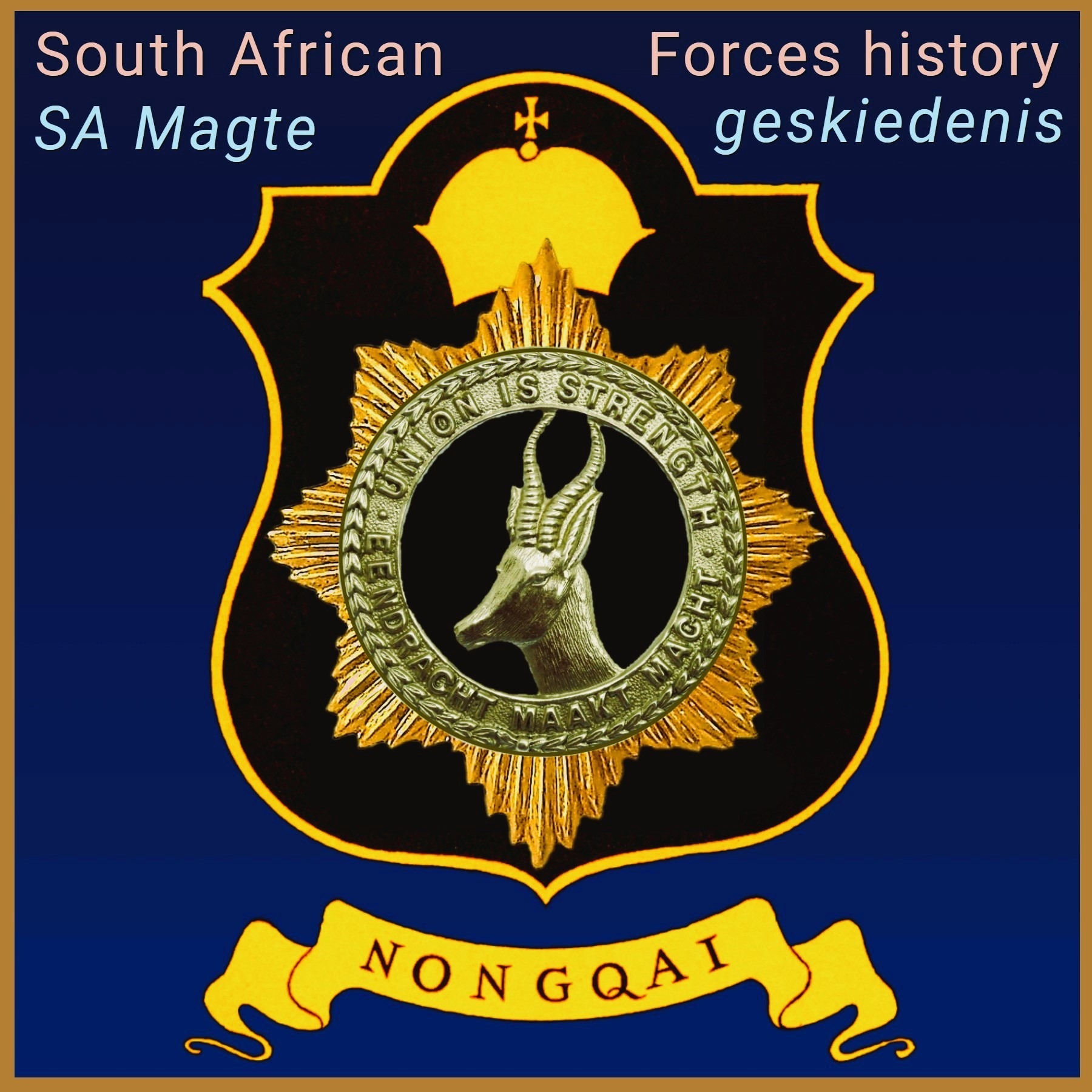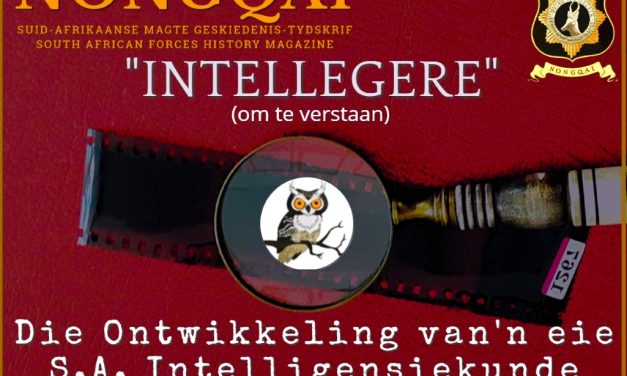DIE COMRADES MARATHON: 8 JUNIE 2025
May 6, 2025 | SKRYWERS & BOEKE, Uncategorized | 0 |
The Evolution of Intelligence Science in South Afr...
Apr 18, 2025 | Intelligence Science | 0 |
INTELLIGENCE COURSE WITH BND 1979
Apr 17, 2025 | BfSS NIS, BND Bundesnachrichtendienst, BOSS / NI / BSV, Germany | 0
POLICING IN SOUTH-WEST AFRICA (SWAPOL)
Apr 16, 2025 | Koevoet, Operation "K", South-West Africa Police Forces, SWAPOL | 0
INTELLEGéRE 20: DIE BURO
Apr 15, 2025 | BSV/DIE BURO/BfSS, BfSS NIS | 0 |

LAND AS NATIONAL SECURITY ISSUE IN SOUTH AFRICA
May 8, 2025 | National Security - Nasionale Veiligheid | 0
NONGQAI SERIES THE MEN SPEAK Dr Willem Steenkamp THE LAND ISSUE IN SOUTH AFRICA: Emotion, Reason,...
Read MoreNEW BOOK ON SOUTH AFRICA’S BUREAU FOR STATE SECURITY
May 8, 2025 | BOSS / NI / BSV, BSV/DIE BURO/BfSS, Intelligence Science, National Intelligence, Nongqai Books & Writers, SKRYWERS & BOEKE, South African Intelligence History | 0
NUWE VERSAMELSTUK OOR ‘DIE BURO’ (BSV) NOU BESKIKBAAR Nongqai se redakteur vir...
Read MoreDIE COMRADES MARATHON: 8 JUNIE 2025
May 6, 2025 | SKRYWERS & BOEKE, Uncategorized | 0 |
Henning van Aswegen Die Comrades Ultramarathon: 8 Junie 2025 Die Comrades Marathon is ʼn...
Read MoreAPRIL 2025 EDITIONS NOW DOWNLOADABLE
May 1, 2025 | Fire Brigade / Brandweer, NONGQAI EDITIONS pdf, NONGQAI SPECIAL EDITIONS pdf, SOUTH AFRICAN FORCES HISTORY PRESERVED | 0
APRIL-UITGAWES NOU BESKIKBAAR VIR AFLAAI APRIL EDITIONS NOW AVAILABLE FOR DOWNLOAD Standaard...
Read MoreKERNKRAGOOREENKOMS MET ROOI SJINA LAASTE SPYKER IN SUID-AFRIKA SE DOODSKIS
Apr 25, 2025 | Military History, NUCLEAR WEAPONS AND TECHNOLOGY, STRATEGIC STUDIES | 0
KERNKRAGOOREENKOMS MET SJINA LAASTE SPYKER IN NUWE SUID-AFRIKA SE DOODSKIS Henning van Aswegen: 11...
Read MoreINTELLIGENCE COURSE WITH BND 1979
Apr 17, 2025 | BfSS NIS, BND Bundesnachrichtendienst, BOSS / NI / BSV, Germany | 0
uring the Cold War, the Republic of South Africa had a cooperative relationship with Western countries in the spheres of security and intelligence. Information was exchanged, and cooperation included training exchanges. One such course took place in 1979 in Munich, Germany, presented to analysts of the S.A. intelligence service by the BND (the Bundesnachrichtendienst – the intelligence service of the West-Germany). This article recounts the memories of a South African participant.
Read MorePOLICING IN SOUTH-WEST AFRICA (SWAPOL)
Apr 16, 2025 | Koevoet, Operation "K", South-West Africa Police Forces, SWAPOL | 0
The South-West African Police (SWAPOL): 1981 – 1990 Compiled by Wolfgang Witschas Abstract...
Read MoreINTELLEGéRE 20: DIE BURO
Apr 15, 2025 | BSV/DIE BURO/BfSS, BfSS NIS | 0 |
Henning van Aswegen Intellegere, DIE BURO, Nongqai Skrywers & Boeke, Die Buro vir...
Read MoreNATIONAL INTELLIGENCE AND VIOLENCE
Apr 12, 2025 | South African Intelligence History, Covert Action, National Intelligence, Trewits | 0
Mr Johan Mostert emphasises that the NIS never took part in covert operations resulting in the death of persons. The NIS did not co-operate with the CCB nor Vlakplaas of the SAP (SB). No assassinations were committed by the NIS
Read MoreAlgoritmiese Ongeregtigheid
Apr 9, 2025 | AI - Kunsmatige Intelligensie | 0 |
Prof. Hennie Kruger, Algoritmiese Ongeregtigheid, Digitale Frenologie. Kunsmatige Intelligensie...
Read MoreTALK BY MAJ CRAIG WILLIAMSON (agent RS 167)
Apr 8, 2025 | SAP History / Geskiedenis, SAP Security Branch / Veiligheidstak, South African Intelligence History, The Daisy Spy Ring | 0
South African Police Security Branch master spy, Major Craig Williamson, RS 167 spoke on the 2nd of April 2025 about the ever present need for espionage, and gave background about the SAP-SB’s infiltration of the SACP/ANC Alliance during the armed struggle through operations such as “Ops Daisy”.
Read More
Categories
- AI – Kunsmatige Intelligensie
- Archives Posts
- BfSS NIS
- BOSS / NI / BSV
- Brokkies
- BSV/DIE BURO/BfSS
- Capital punishment
- Defence
- Detective Mysteries
- Fire Brigade / Brandweer
- Foreign Armies / Buitelandse Weermagte
- Historical photos
- HUMOUR IN UNIFORM
- Life Story
- Local South African Police Forces
- Military History
- National Security – Nasionale Veiligheid
- Nature Conservation
- NONGQAI BOEKE
- Nongqai Books
- NUCLEAR WEAPONS AND TECHNOLOGY
- Police Psychology
- Public Safety
- Rhodesian Conflict
- SA Defence Force / Weermag
- SA Railways Police / Spoorwegpolisie
- SAP – Durban
- SAP Commissioners
- SAP Field Court Martial (1914)
- SAP History / Geskiedenis
- Sekretariaat van die Staatsveiligheidsraad (SSVR – SSSC)
- SKRYWERS & BOEKE
- SOUTH AFRICAN FORCES HISTORY PRESERVED
- South African Intelligence History
- South-West Africa Police Forces
- Staatsveiligheidsraad
- STRATEGIC STUDIES
- The Daisy Spy Ring
- TIN Teeninsurgensie / COIN
- Uloliwe
- Uncategorized
32 Battalion Angola Autobiography Johan van der Merwe BAZLEY HALT MURDER Bloemfontein Border War Brazzaville Brig Fanie Bouwer (SAP - Ret) capital punishment chatsworth CR Swart death penalty Dr Willem Steenkamp Gough Island historical photos history HUMOR IN UNIFORM Israel johan van der merwe Koevoet national intelligence service Nelson Mandela nis Operation Brush Public Safety Q Grobler Rennes-le-Chateau Rhodesia SAAF SADF SAP-SB SAP history SAP King's Rest SA Police SARP Port Shepstone Selous Scouts sheriff south africa South Africa democratic transition south african forces south african forces history Special Forces Tristan da Cunha Vlakplaas Wentworth











